By Donald Kirk
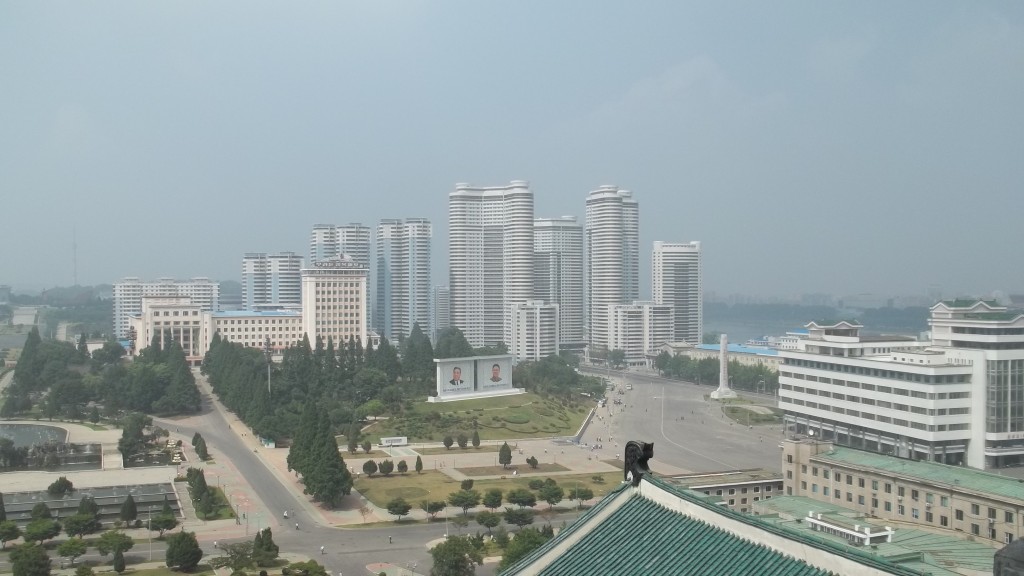
New apartments as seen from a balcony on the Great Study House of the People overlooking Kim Il-sung square. (Donald Kirk)
The skyline and traffic patterns of the North Korean capital of Pyongyang were not quite the same during my most recent visit in July as when I was last there four years earlier. This time, on a 12-day tour, I saw people preparing to move into their brand new homes in a row of glistening high-rise apartment blocks in the center of the city. There were jokes about electricity failures stopping elevators in the 42-story towers, but there was no doubt those with rank, privilege and connections were living fairly comfortably. Other signs of the times were a few traffic lights–though uniformed traffic ladies were still much in evidence–and occasional brief traffic jams. In my four previous visits, I don’t recall the tour bus ever having been delayed by other vehicles on mostly empty streets.
Appearances of real change, however, might be deceiving. Crowded trams, made in East Germany years before the fall of the communist regimes of the old Soviet Union and its eastern Europe satellites, still lumber slowly beside avenues off which slum-like alleys run by decaying buildings largely hidden from view. Beyond the new apartment buildings, away from the avenues, people here as everywhere seem to be barely getting by.
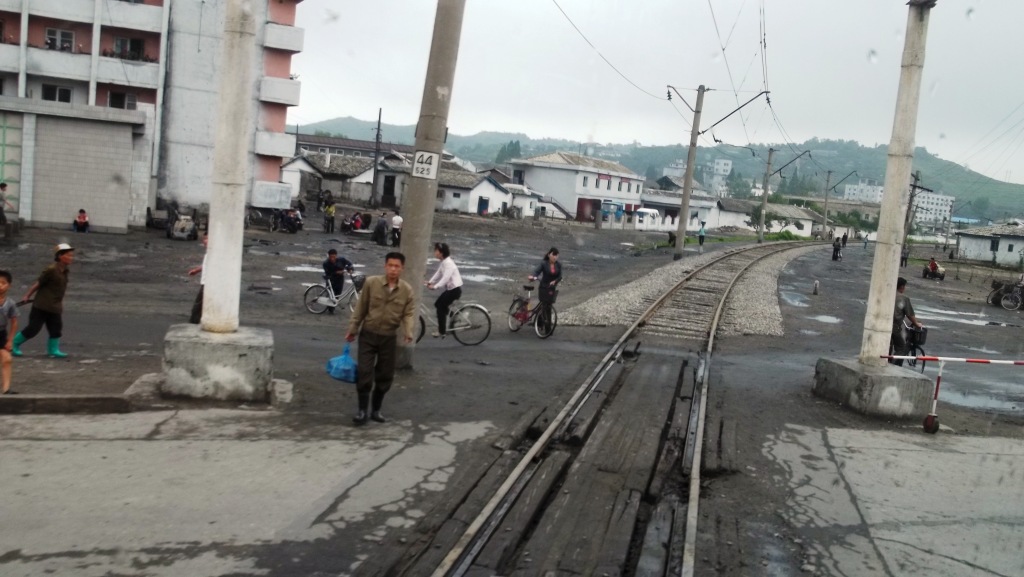
A snapshot of life on the way to the Hamhung Industrial Zone. (Donald Kirk)
Rushing to approved tourist sites, you can hardly escape the reality of a country riven by class and social differences–and the danger that eventually the have-nots will not be quite so submissive to the will of the haves. You hear no such counter-revolutionary talk, however, while still in North Korea. You’re blocked from making local phone calls to anyone but diplomats and representatives of international organizations. You have to deposit your cell phone at the airport on arrival, retrieving it just before you leave. You can’t go on the Internet or receive email. Outgoing calls are extremely expensive, and presumably monitored, and you have to plan any itinerary far in advance.
The rules are just as tough on foreign embassies and companies as they are on short-term visitors. They’re unable to call even their own local staff members, all of whom are paid directly by the government, not their ostensible employers, and are assumed to inform for the multi-tentacle security apparatus. Much of the country, moreover, is closed to diplomats just as it is to short-term visitors. Diplomats when they do travel come back wondering about another issue–how long, they ask themselves, will people remain so supine, amenable to the will of the center, before they seriously complain? Nowhere, however, do you find the least sign of protest.
The contrast between life in Pyongyang and elsewhere is blatant. Cars are more common there than elsewhere, and most of the country’s one million cell phone users live in the capital and a few other major centers. The disparity between life in Pyongyang, population 3 million, and the rest of North Korea’s 24-25 million people is evident as you bump along cracked and buckling roads over mountains, sometimes stripped of trees, past farmland where bicycles and oxcarts are standard modes of transportation. The scenes appear deceptively bucolic–an image of how the countryside might have appeared a century ago. Corn and vegetables fill “private plots” around small homes fashioned from white-washed cement, supplementing harvests from “cooperative farms” that never leave enough for the tillers of the soil who are supposed to get a percentage of the crops.

A North Korean worker in Wonsan. (Donald Kirk)
Black smoke spewing from dilapidated trucks powered by wood-burning stoves in the open rear cargo sections blemishes the impression of rustic simplicity. Guides ban photographs of these old wood-burners–they may be a tribute to ingenuity in a time of need but are still an embarrassment to a country that looks more like a backward third-world enclave than the regional power player fantasized by its leaders
On the road to Hamhung, population 800,000, the country’s second largest city and main industrial center, near the east coast 100 miles northeast of Pyongyang, our guides–we call them “minders”–suddenly advise, no picture-taking. “This city was opened just two years ago,” a minder explains, and the city and region are believed to harbor too many tales of poverty and starvation from the darkest days of the famine of the 1990s when two million people died. Many, we hear, passed away here while an elite class of officials, their cronies and relatives close to authorities in Pyongyang clung to enough food and medicine to survive.
Hamhung was finally opened to occasional foreigners only two years ago, and the city’s decaying factories and decrepit apartments betray the hardships of people still struggling to recover. Inside the Hamhung industrial zone, an ancient narrow-gauge railway, a relic of the Japanese colonial era, is supposed to carry workers commuting to factories dating from the years after the Korean War when the city was pulverized by bombing. I see one train on a distant siding, but none is moving when we’re there.
Our minders tell us one of Hamhung’s main products is a uniquely North Korean fabric called vinylon, made from limestone, but they don’t want anyone photographing the vinylon factory–whether because of the run-down look of its ramshackle old buildings or the presence of another factory in the complex that’s said to produce “machinery,” perhaps military hardware, nobody knows.

Hamhung's new fertilizer factory. (Donald Kirk)
There is, however, one showcase–a fertilizer factory. Manager Lim Hung-nam skips the plant’s Japanese origins but says it produces 700,000 tons a year, maybe a third of the country’s needs. Another factory on the west coast, he says, produces 600,000 tons while aid, mainly from China, make up for the glaring shortfalls. Glistening machinery, some of it fairly new, testifies to the potential for other factories to shine as well. “All this equipment we made by ourselves,” says Lim. Asked whether “eternal” President Kim Il-sung or his son Kim Jong-il, now “eternal” general secretary of the ruling Workers’ Party and “eternal” chairman of the national defense commission, ever visited, he points at two bronzed tablets whose inscriptions testify to their “on-the-spot guidance.”
The deification of Kim Il-sung and Kim Jong-il is so total that it’s not clear if third-generation heir Kim Jong-un, not yet 30, showered with all the requisite titles including “marshal” of the country, with no previous experience in governance, can or even wants to reverse the pattern. Life may be marginally more open than a few years ago, but you can’t talk to ordinary people, and you can’t walk into stores or markets to see if the shelves are as empty as they appear from quick looks through the windows.
Superficially, the North Korean media venerates Kim Jong-un in superlatives that place him on nearly the same level as his forebears while he pays lip service to the policy of songun, “military first,” often in fiery rhetorical blasts against South Korea. “If the U.S. side wants another war, they will have to sign a document of surrender, not an armistice,” an army captain at Panmunjom, the “truce village” where the Korean War armistice was signed in July 1953, dutifully quotes the “supreme commander” as having said during a visit in March. “We should defeat them using the Korean style of repelling them.”
At the base of the 150-meter-tall tower in Pyongyang honoring juche, “self-reliance,” symbolized by a hammer, a sickle and a writing brush on top, a woman explains its significance in terms of “threats” by the country’s enemies, the United States, South Korea and Japan, which ruled the Korean peninsula as a colony for 35 years before the Japanese surrender in 1945. “Our goal is to keep our sovereignty,” she says. “By investing in the economy we could be better off, but to be independent is more important.”
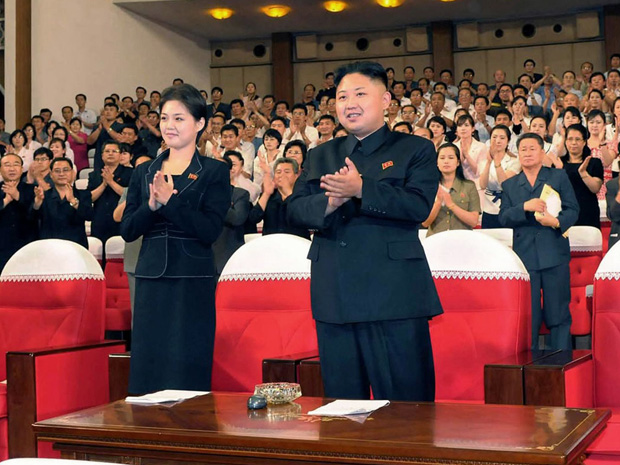
NK leader Kim Jong-un and recently revealed wife, Ri Sol-ju.
No one in North Korea would dare question that principle openly, but Kim Jong-un is believed to want to bring about change, at least in emphasis. He is assumed to have been the one who convinced his father four years ago of the need for cell phones. Configured to make international calls impossible, they’re widely seen as a sign of the desire to modernize but not break with the past. Kim’s appearance with a mystery woman believed to be his wife at a performance featuring Walt Disney characters was shown by the North Korean media just as he faced the top military leader who owed his career to his father’s “military first” policy.
Reportedly, conflict over economic policy was why General Ri Yong-ho was stripped of all his posts while Kim removed the armed forces from control over the economy. Could it be that the new leader by now is aware that life for many, even in the best of times, is harsh – and totally unbearable for those still dying of untreated diseases and starvation?
Down the east coast, on the way to the Mount Kumgang tourist complex just above the North-South Korea line, thousands of “volunteers” hunker over portions of a rusted single-track rail line, hammering at rocks for the rail bed. No modern equipment in sight. They’re dedicating their muscle power to restoring the line so trains can bring Chinese tourists to the Kumgang region.
Inside the Kumgang resort, at the foot of stupendous granitic peaks, the scene is one of desolation. Business shows no sign of recovering since South Korea’s President Lee Myung-bak four years ago banned tourists from entering from the South after a guard shot and killed a middle-aged woman who’d ventured from the tourist zone to gaze at the sunrise. A minder, normally polite and cheerful, rationalizes the incident on the grounds that the woman ignored shouts and a warning shot and was wandering toward “an army base.” As for President Lee, he echoes the official North Korean media, declaring angrily, “I would like to kill him not by shooting him but with my bare hands.”
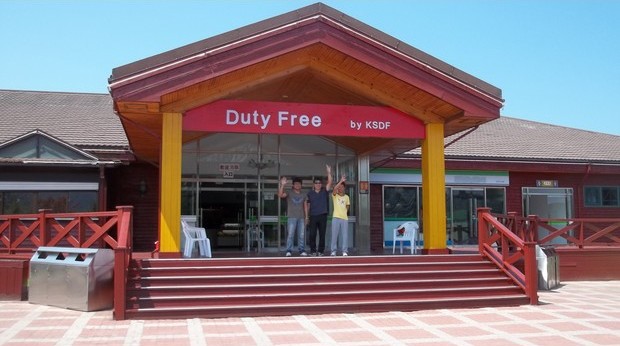
Jovial workers at the Mt. Kumgang resort. (Donald Kirk)
At the duty-free shop at the Kumgang resort, clerks hired on short-term contracts from China are more concerned by the lack of business, not politics. Sales, they say, range from slow to non-existent. What about those tourists whom North Korea wants to lure from China? Kevin Ho, the Hong Kong manager, smiles. “The Chinese don’t want to spend,” he says. “You’re the only ones here today.”
On the trail to Guryong falls, tumbling down one of Kumgang’s many rock faces, you see reminders of hero-worship of the Kim dynasty. Statements and blessings from “eternal” President Kim Il-sung and Kim Jong-il are carved for eternity into the granite, but Kim Jong-un goes unmentioned. One of our minders, in an unscripted break, explains he’s been “too busy” to make the trek. Is the new “supreme leader,” much overweight, suspected of being not physically fit for the hard two-hour hike to the falls? The minder prefers to go on defending the policies of the regime, arguing passionately that nukes and missiles are needed to stave off the constant threat of invasion by enemies near and far.
In Pyongyang, at the martyrs’ cemetery honoring those who died fighting with Kim Il-sung against the Japanese, an inscription reads, “The noble revolutionary spirit will live forever in the hearts of the people.” The cemetery memorializes each hero with a bust and an inscription on a slope ascending to a monument in red marble showing the victorious struggle against the Japanese. Far below, by the Daedong River, looms the spacious Kumsusan memorial hall where the bodies of Kim Il-sung and Kim Jong-il rest in state.
During my visit, hundreds of soldiers file in columns through the cemetery. They’re 18 or 19 but look 12 or 13–the result of the pervasive hunger that has stunted the growth of much of the populace. Some grin as they stand in line waiting to bow before the memorial. A few wave good-naturedly despite the presence of grizzled sergeants accompanying them. Judging from the appearance of these young soldiers, it’s hard to believe North Korea’s 1.2 million troops, many actually working on farms or in factories, not in military outposts, are ready or eager to fight another Korean War. The inherent tragedy is that of a country ruled by a regime that prefers to stage spectacles venerating the new leader and his forebears while wasting its resources on nukes and missiles.
__________________________________________________________
Donald Kirk is a veteran correspondent and noted author on conflict and crisis from Southeast Asia to the Middle East to Northeast Asia. He has covered wars from Vietnam to Iraq, focusing on political, diplomatic, economic and social as well as military issues.
He recently returned from Okinawa, Japan and is on the ground covering issues surrounding the construction of a naval base on Jeju Island.
He most recently published “Korea Betrayed: Kim Dae Jung and Sunshine.” His Web site is donaldkirk.com
Contact him at [email protected].
Note: There is a print link embedded within this post, please visit this post to print it.
| Thethreewisemonkeys.com 3WM Social Media    |
|
'Hood News Art Event/PSA Expat Life Featured Fiction/Poetry
From the Scene Korean Life Politics Rant Review Student Writing Travel


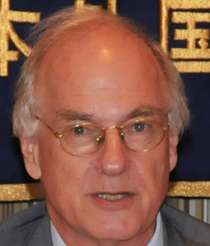



Recent comments